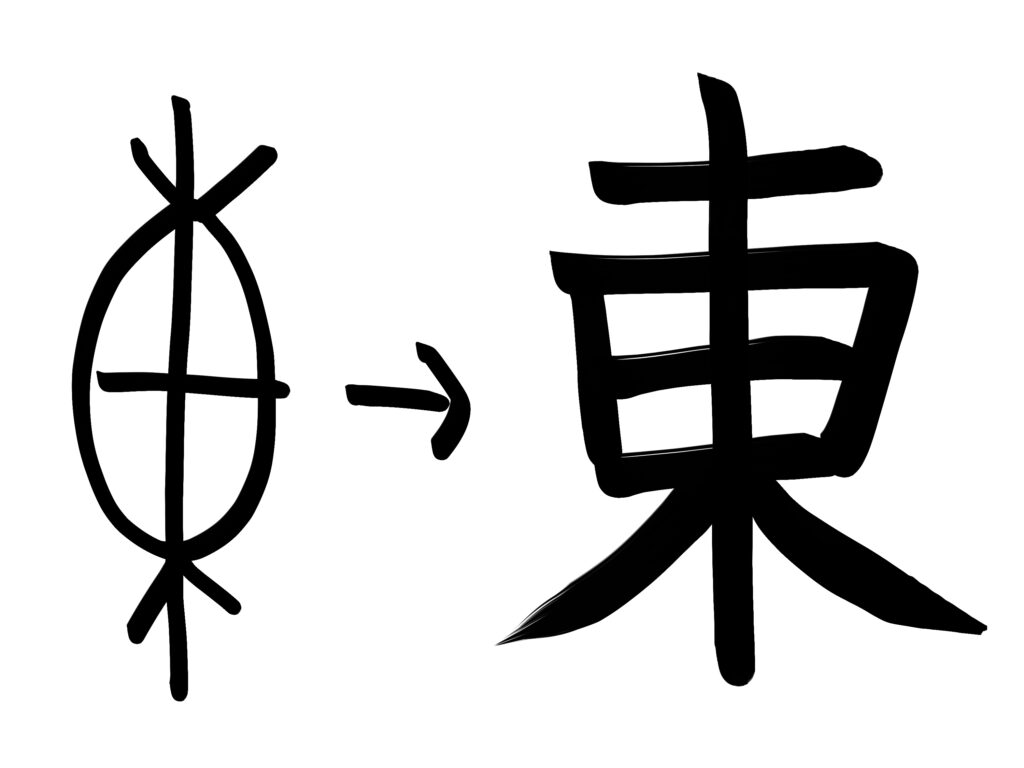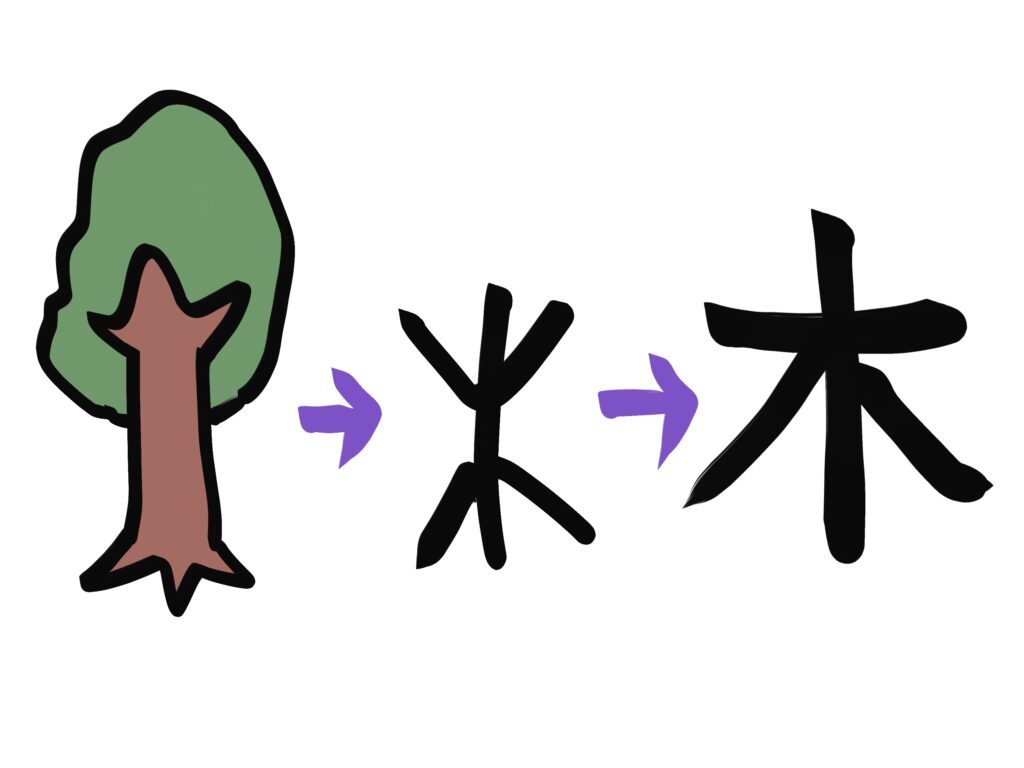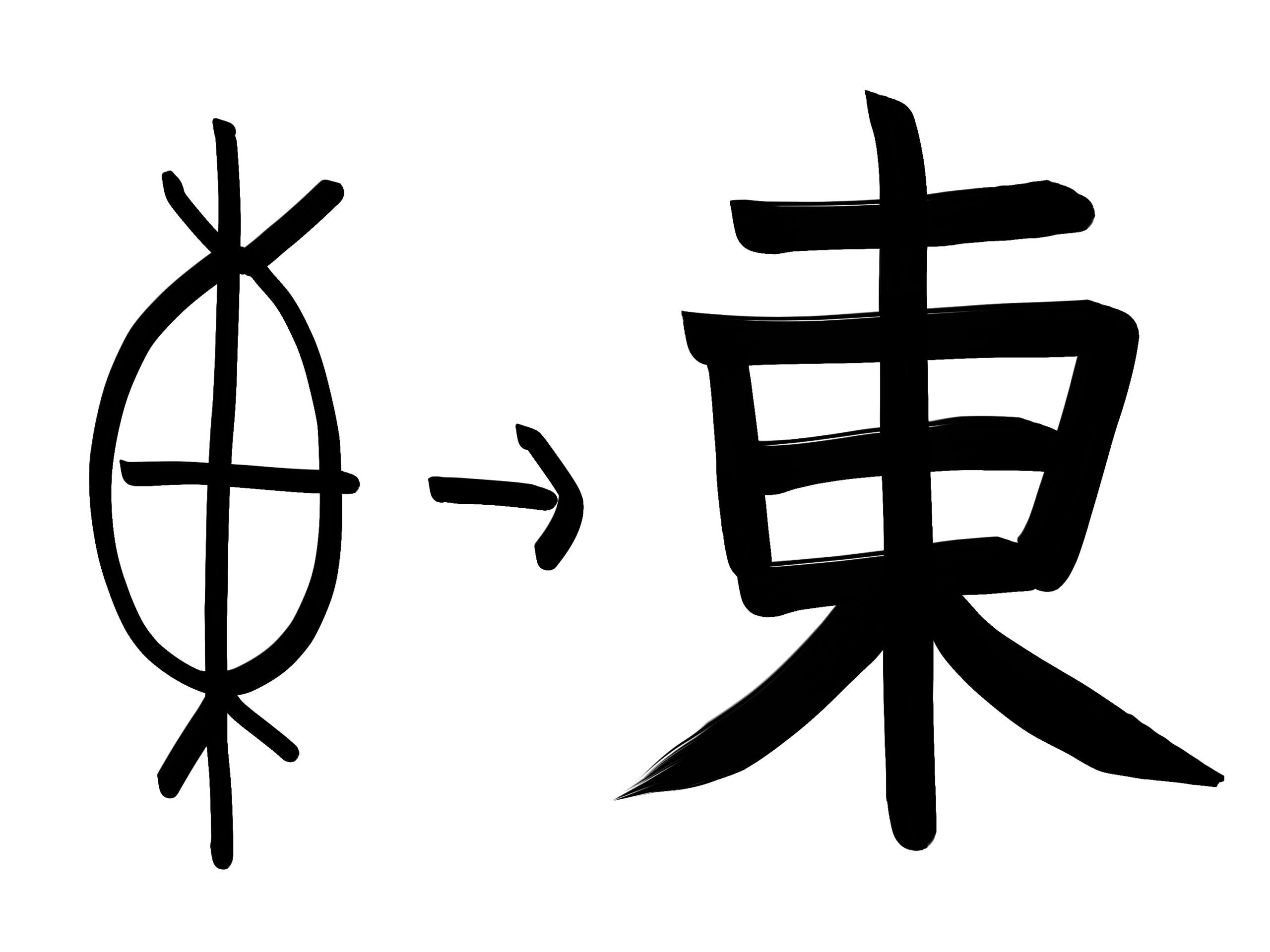東
- Meaning: east
- Pronunciations: too / higashi, azuma
東 is the first Kanji letter of 東京 (Tokyo: the capital city of Japan). 東 means “east”, while 京 means “city”. Therefore, 東京 (Tokyo) initially means “the east city”. While Osaka and Kyoto are the west cities, Tokyo, which used to be called “江戸 (Edo)”, is understood to be the city of the east.
- 東西(とうざい): east and west
- 東日本(ひがしにっぽん, ひがしにほん): eastern Japan
- 東北(とうほく): north-east, Tohoku (northernmost six prefectures of Honshu)
- 東南(とうなん): south-east
- 東洋(とうよう): Orient
- 中東(ちゅうとう): Middle East
The Kanji character “東” was believed to be composed by “日 (sun)” and “木 (tree)”. Picturing the sun coming up through the trees turned into the letter “東” which means “east”. It sounds pretty reasonable, doesn’t it?
However, it was the wrong understanding. Archaeological evidence has been discovered and it is understood that “東” was originally a pictograph of “a bag with both ends tied up”. It was not a combination of “sun” and “trees”, even though “日(sun)+木(tree)=東(east)” would be easier to remember for Kanji learners.

For your reference, here are how they became “日 (sun)” and “木 (tree)”.

Transmission from pictograph to a Kanji character “日 (sun)”.

Transmission from pictograph to a Kanji character “木 (tree)”.



Comments